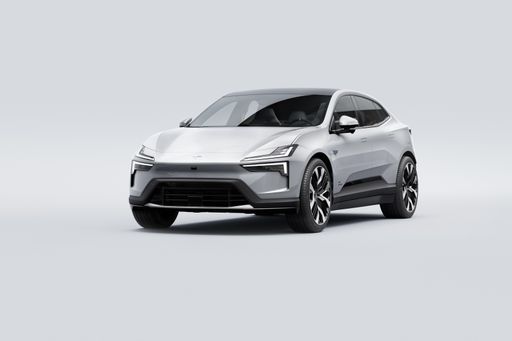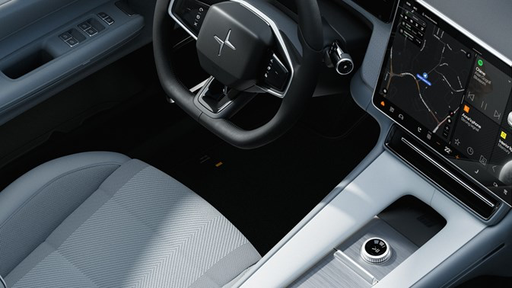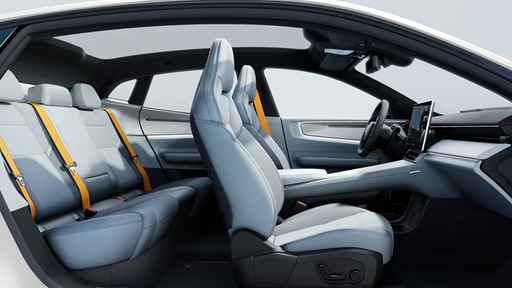Polestar 4 vs ZEEKR 7X - Differences and prices compared
Costs and Efficiency:
Price and efficiency are key factors when choosing a car – and this is often where the real differences emerge.
ZEEKR 7X has a to a small extent advantage in terms of price – it starts at 45400 £, while the Polestar 4 costs 53100 £. That’s a price difference of around 7637 £.
In terms of energy consumption, the advantage goes to the ZEEKR 7X: with 17.70 kWh per 100 km, it’s barely noticeable more efficient than the Polestar 4 with 17.80 kWh. That’s a difference of about 0.10 kWh.
As for range, the Polestar 4 performs barely noticeable better – achieving up to 620 km, about 5 km more than the ZEEKR 7X.
Engine and Performance:
Under the bonnet, it becomes clear which model is tuned for sportiness and which one takes the lead when you hit the accelerator.
When it comes to engine power, the ZEEKR 7X has a to a small extent edge – offering 646 HP compared to 544 HP. That’s roughly 102 HP more horsepower.
In acceleration from 0 to 100 km/h, the is quicker – completing the sprint in , while the takes . That’s about faster.
In terms of top speed, the ZEEKR 7X performs hardly perceptible better – reaching 210 km/h, while the Polestar 4 tops out at 200 km/h. The difference is around 10 km/h.
There’s also a difference in torque: ZEEKR 7X pulls hardly perceptible stronger with 710 Nm compared to 686 Nm. That’s about 24 Nm difference.
Space and Everyday Use:
Whether family car or daily driver – which one offers more room, flexibility and comfort?
Seats: offers more seating capacity – vs .
In curb weight, Polestar 4 is minimal lighter – 2230 kg compared to 2395 kg. The difference is around 165 kg.
In terms of boot space, the ZEEKR 7X offers barely noticeable more room – 539 L compared to 526 L. That’s a difference of about 13 L.
When it comes to payload, ZEEKR 7X barely noticeable takes the win – 485 kg compared to 455 kg. That’s a difference of about 30 kg.
Who wins the race?
The ZEEKR 7X proves to be offers a more balanced package and therefore becomes our DriveDuel Champion!
ZEEKR 7X is the better all-rounder in this comparison.

ZEEKR 7X
Costs and Consumption
View detailed analysis
Engine and Performance
View detailed analysis
Dimensions and Body
View detailed analysis
Polestar 4
The Polestar 4 wears a coupe-like profile and a Scandinavian-minimal interior that feels premium and unexpectedly roomy, with composed handling that makes urban driving and country roads a pleasure. For buyers who want an electric car that turns heads without shouting, the Polestar 4 is a stylish, clever choice that balances practicality with personality.
details @ Polestar Automotive Holding
@ Polestar Automotive Holding
 @ Polestar Automotive Holding
@ Polestar Automotive Holding
 @ Polestar Automotive Holding
@ Polestar Automotive Holding
ZEEKR 7X
The ZEEKR 7X is a striking entry into the electric vehicle market, blending sleek aesthetics with a promise of cutting-edge technology. Its design exudes modern luxury while offering advanced features tailored for tech-savvy drivers. Positioned as a competitor in the premium electric segment, the 7X aims to deliver a dynamic driving experience alongside eco-friendly credentials.
details
 @ Polestar Automotive Holding
@ Polestar Automotive Holding
|
|
|
|
|
Costs and Consumption |
|
|---|---|
|
Price
53100 - 59900 £
|
Price
45400 - 54000 £
|
|
Consumption L/100km
-
|
Consumption L/100km
-
|
|
Consumption kWh/100km
17.8 - 18.7 kWh
|
Consumption kWh/100km
17.7 - 19.9 kWh
|
|
Electric Range
590 - 620 km
|
Electric Range
480 - 615 km
|
|
Battery Capacity
94 kWh
|
Battery Capacity
-
|
|
co2
0 g/km
|
co2
0 g/km
|
|
Fuel tank capacity
-
|
Fuel tank capacity
-
|
Dimensions and Body |
|
|---|---|
|
Body Type
SUV
|
Body Type
SUV
|
|
Seats
5
|
Seats
5
|
|
Doors
5
|
Doors
5
|
|
Curb weight
2230 - 2355 kg
|
Curb weight
2395 - 2535 kg
|
|
Trunk capacity
526 L
|
Trunk capacity
539 L
|
|
Length
4840 mm
|
Length
4787 mm
|
|
Width
2008 mm
|
Width
1930 mm
|
|
Height
1534 mm
|
Height
1650 mm
|
|
Max trunk capacity
1536 L
|
Max trunk capacity
-
|
|
Payload
455 kg
|
Payload
455 - 485 kg
|
Engine and Performance |
|
|---|---|
|
Engine Type
Electric
|
Engine Type
Electric
|
|
Transmission
Automatic
|
Transmission
Automatic
|
|
Transmission Detail
Reduction Gearbox
|
Transmission Detail
Reduction Gearbox
|
|
Drive Type
All-Wheel Drive, Rear-Wheel Drive
|
Drive Type
Rear-Wheel Drive, All-Wheel Drive
|
|
Power HP
272 - 544 HP
|
Power HP
421 - 646 HP
|
|
Acceleration 0-100km/h
3.8 - 7.1 s
|
Acceleration 0-100km/h
3.8 - 6 s
|
|
Max Speed
200 km/h
|
Max Speed
210 km/h
|
|
Torque
343 - 686 Nm
|
Torque
440 - 710 Nm
|
|
Number of Cylinders
-
|
Number of Cylinders
-
|
|
Power kW
200 - 400 kW
|
Power kW
310 - 475 kW
|
|
Engine capacity
-
|
Engine capacity
-
|
General |
|
|---|---|
|
Model Year
2024
|
Model Year
2025
|
|
CO2 Efficiency Class
A
|
CO2 Efficiency Class
A
|
|
Brand
Polestar
|
Brand
ZEEKR
|
Is the Polestar 4 offered with different drivetrains?
The Polestar 4 is offered with All-Wheel Drive or Rear-Wheel Drive.
The prices and data displayed are estimates based on German list prices and may vary by country. This information is not legally binding.
